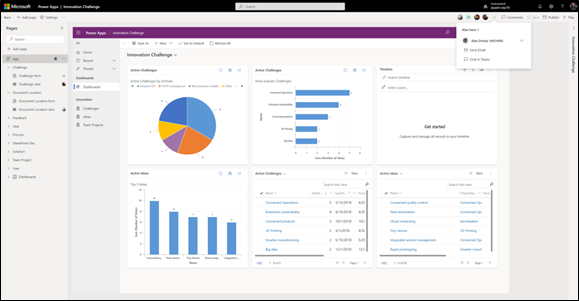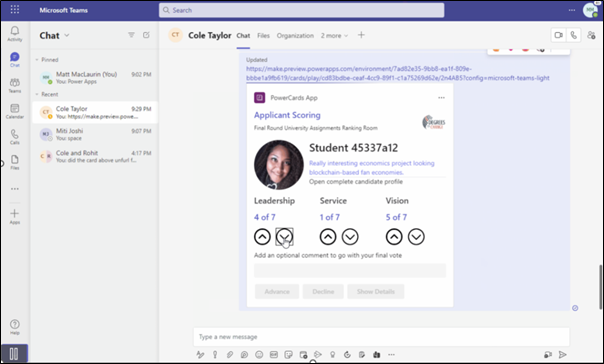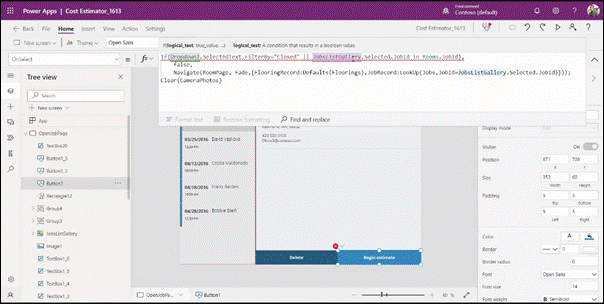
This month saw the first ever Power Platform Conference take place, drawing the global Power Platform community to Orlando, Florida, to share knowledge and hear about Microsoft’s new innovations first-hand. Our Solutions Architect Jake Harvey was one of those in attendance – in this blog, he shares a round-up and reaction on the most exciting news for organisations, developers and app makers.
The week since the first-ever Power Platform conference in Orlando has flown by, but has given us time to digest some of the amazing announcements made by Microsoft and what these mean for the technology itself but more important for our clients.
As a provider of Microsoft Power Platform consulting services, we’re very excited by what the future holds for developers and makers at your organisation. Here are the five things we loved most.
Co-authoring is coming to Power Apps
For all its great capabilities that provide low-code developers/makers with a platform to create rich applications, one constant frustration throughout the Power Apps journey has been the lack of collaboration features in comparison to the rest of the Microsoft 365.
Up until now, Power Apps has been limited to a single-user development experience where app makers ‘lock’ the application they’re working on until they save, publish and leave the app designer.
Now multiple makers will have the ability to work together through a similar experience to the co-authoring abilities we get in Office.
Makers will have visibility over other users in the app, the specific changes others are making and the option to chat to colleagues as they work together to build a great solution.
As with Office, you can also tag your colleagues in the app to get their attention about something and ensure all contributing makers can remain collaborative throughout the app-making process.

Cards for Power Apps
A new addition to Power Apps is the ability to create interactive actionable cards that can include business data just like any other Power App we create.
Based on the existing Adaptive Card Framework, we’re able to create customised cards that can be shared into collaborative spaces such as Teams and visually present data, information or actionable controls to end users to interact with, without the need for them to leave their primary workspace.
We see great potential here for app makers to quickly create cards to streamline daily activities that their colleagues complete, such as timesheet input, task management and approvals, all without leaving their collaboration space in Teams.

Maker Matching
A common theme throughout the entire conference was the sense of community that is available to any maker within the Power Platform. Yet while this is rich outside of organisations, the concept of a ‘Maker Community’ internally within an organisation often never materialises.
To address this, Microsoft is introducing a new Power Virtual Agent called Maker Matching. This supports new makers in a few ways.
Firstly, makers can interact with the Virtual Agent from within the app designer to quickly be pointed towards learning content that will help them get started with their app.
Maker matching also enables users to quickly find other makers within their organisation who may have more experience in developing Power Apps solutions. More experienced makers can be nominated as Advisors and become an accessible expert for users to speak to when they encounter issues.
This is a great addition to the overall adoption journey and will certainly become an important aspect to any successful Power Platform Centre of Excellence.

Microsoft Power Up skilling programme
Continuing the themes of community and introducing new app makers to the Power Platform, Microsoft announced a new learning programme called Microsoft Power Up. This aims to empower non-technical professionals to either educate themselves on how the Power Platform could improve their current workday or even convert them entirely into becoming a full time Power Platform developer.
The programme aims to provide professionals with foundational and role-based skills for in-demand Power Platform jobs with the notion that anyone can become an app maker.
At the conference, professionals who had already completed the programme gave insight into their experiences with some completely transitioning from their non-technical jobs into full-time Power Platform roles.
Making the Power Platform as embedded in our daily toolset “as Excel”
Finally, less of an announcement around the technology and more of a statement of intent from Microsoft about their vision for the Power Platform:
Microsoft aims to make the Power Platform as accessible, intuitive and embedded into our day-to-day work as Excel.
With 7.4 million active monthly app makers, Microsoft has made great progress since the term ‘Power Platform’ was established for the tools in 2018. Microsoft aims to grow this number tenfold in the coming years and it will be exciting to see how they continue to introduce more capabilities that enable anyone to become an app maker.
At Content+Cloud we provide Microsoft Power Platform consulting services that can help you unlock the potential for innovation and greater efficiencies at your organisation. Find out more about our expert services. Microsoft Power Platform services – Content+Cloud


